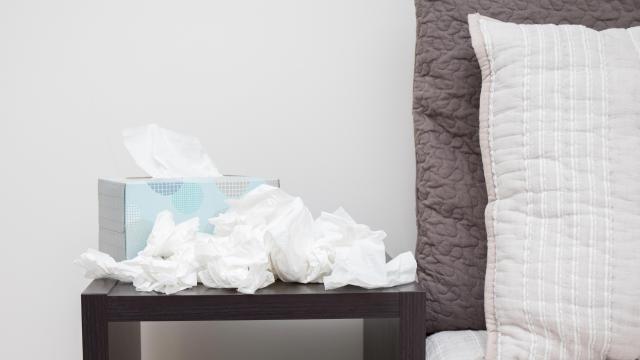When a sickness is tearing through your home, you may not feel like cleaning, whether because you’re down and out yourself or you’re taking care of a family member who is — or maybe both. Unfortunately, it’s more important than ever to stay on top of your disinfecting game when someone in the household has a virus.
But how much cleaning do you actually need to do? It can be tough to know where to begin, especially if you’re feeling gross yourself, so here’s where to start.
Regular cleaning versus disinfecting
The Centres for Disease Control and Prevention has a lot of information on cleaning to avoid sickness and to deal with germs once they’re present in your space. Look for household cleaners containing soap or detergent to remove germs on surfaces and reduce your risk of infection.
Just tackling your surfaces with cleaners is enough to remove most harmful viruses and bacteria, says the CDC, but if someone is already sick, you have to follow it up by sanitizing or disinfecting for maximum prevention. The CDC recommends using an EPA-registered disinfectant product or a bleach solution for this step. The EPA registration list is here. It’s important to leave the disinfectant on the surface long enough to actually kill the germs. The disinfectant you choose should have a “contact time” indicated on the label.
Which surfaces to prioritise
According to Bob Vila, these are the surfaces and rooms you should focus on when cleaning to avoid illness:
- The bathroom, including the toilet, the faucets, and all hard surfaces
- The kitchen, including dishes and cups that were touched by the sick person, as well as drawer and refrigerator handles, keypads on appliances, and all hard surfaces
- All the door handles in the home
- Any fabrics touched by the sick person, including clothes, robes, towels, stuffed animals, and bedding (which must be washed on the hottest setting in your machine)
- All the hard surfaces, including light switches, tables, remotes, and especially anything in the area the sick person tends to stay
- Electronics, like phones and tablets
- The garbage cans around the house, which should be disinfected
For good measure, toss out the family toothbrushes and replace them with new ones. The same goes for sponges in the kitchen or any other disposable cleaning products you only use for a short time. When cleaning each room, use different cloths, sponges, or cleaning tools to avoid bringing germs from one location into another, says WebMD, which also recommends changing pillowcases daily, but leaving the rest of the bed linens until the sickness passes.
How soon do you need to clean when you’re sick?
Clean during the sickness to the best of your ability. Take garbage out daily and disinfect the cans. Wipe down surfaces and try to keep a supply of clean laundry. The quicker you rid your home of the germs that are clinging to your stuff, the better.
According to the CDC, the flu virus can live — and potentially infect others — for up to 48 hours after it’s left behind on a surface. (It only lives for three to five minutes on a person’s hands, which is more comforting, but still concerning.) Norovirus, which can cause stomach bugs, can even linger for weeks, according to WebMD. To reduce the likelihood of anyone else getting sick, it’s important to start your disinfecting routine as soon as the first person falls ill.

Leave a Reply
You must be logged in to post a comment.